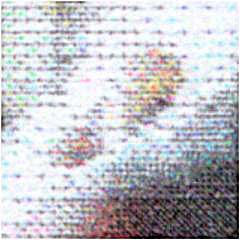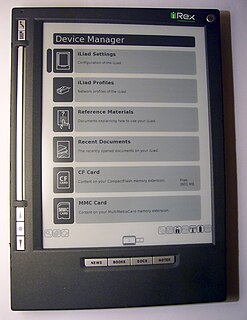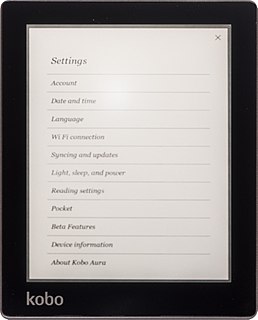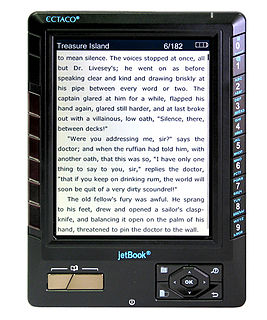
The Hanlin is an e-Reader, an electronic book (e-book) reading device. The Hanlin v3 features a 6" (15 cm), 4-level grayscale electrophoretic display (E Ink material) with a resolution of 600×800 pixels (167 ppi), while the v3+ features a 16-level grayscale display. [1] The Hanlin v5 Mini, features a 5" (15 cm), 8-level grayscale electrophoretic display (E Ink material) with a resolution of 600×800 pixels (200 ppi). The device runs a Linux-based OS.

An electronic book, also known as an e-book or eBook, is a book publication made available in digital form, consisting of text, images, or both, readable on the flat-panel display of computers or other electronic devices. Although sometimes defined as "an electronic version of a printed book", some e-books exist without a printed equivalent. E-books can be read on dedicated e-reader devices, but also on any computer device that features a controllable viewing screen, including desktop computers, laptops, tablets and smartphones.
In digital photography, computer-generated imagery, and colorimetry, a grayscale or greyscale image is one in which the value of each pixel is a single sample representing only an amount of light, that is, it carries only intensity information. Grayscale images, a kind of black-and-white or gray monochrome, are composed exclusively of shades of gray. The contrast ranges from black at the weakest intensity to white at the strongest.
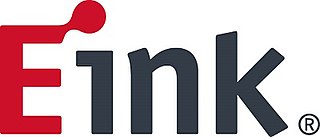
E Ink Corporation is a subsidiary of E Ink Holdings (EIH), a Taiwanese Holding Company (8069.TWO) manufacturer of electrophoretic displays (EPDs), a kind of electronic paper. E Ink is located in Billerica, Massachusetts, and was co-founded in 1997 by undergraduates J.D. Albert & Barrett Comiskey, Joseph Jacobson, Jerome Rubin and Russ Wilcox. Two years later, E Ink partnered with Philips to develop and market the technology. Jacobson and Comiskey are listed as inventors on the original patent filed in 1996. Albert, Comiskey and Jacobsen were inducted into the National Inventors Hall of Fame in May 2016. In 2005, Philips sold the electronic paper business as well as its related patents to Prime View International (PVI).
Contents
- Specifications of Hanlin Models
- Hardware
- Software
- Product Version
- See also
- External links
- References
The device is manufactured by the JinKe Electronic Company in China. It is rebranded by various OEMs and sold under the names Bebook, Walkbook, lBook, Iscriptum, Papyre, EZ Reader, Koobe and ECO Reader.
The Hanlin eReader works best with EPUB, RTF, FB2, and Mobipocket documents, because of their simplicity, interoperability, and low CPU processing requirements. These files also offer more zoom levels, and more options like search, landscape mode, and text to speech than with PDF, DOC, HTML, or TXT.

EPUB is an e-book file format that uses the ".epub" file extension. The term is short for electronic publication and is sometimes styled ePub. EPUB is supported by many e-readers, and compatible software is available for most smartphones, tablets, and computers. EPUB is a technical standard published by the International Digital Publishing Forum (IDPF). It became an official standard of the IDPF in September 2007, superseding the older Open eBook standard.
The Rich Text Format is a proprietary document file format with published specification developed by Microsoft Corporation from 1987 until 2008 for cross-platform document interchange with Microsoft products. Prior to 2008, Microsoft published updated specifications for RTF with major revisions of Microsoft Word and Office versions.
FictionBook is an open XML-based e-book format which originated and gained popularity in Russia. FictionBook files have the .fb2 filename extension. Some readers also support ZIP-compressed FictionBook files
It also uses JinKe's proprietary WOLF format (file extension .wol).
